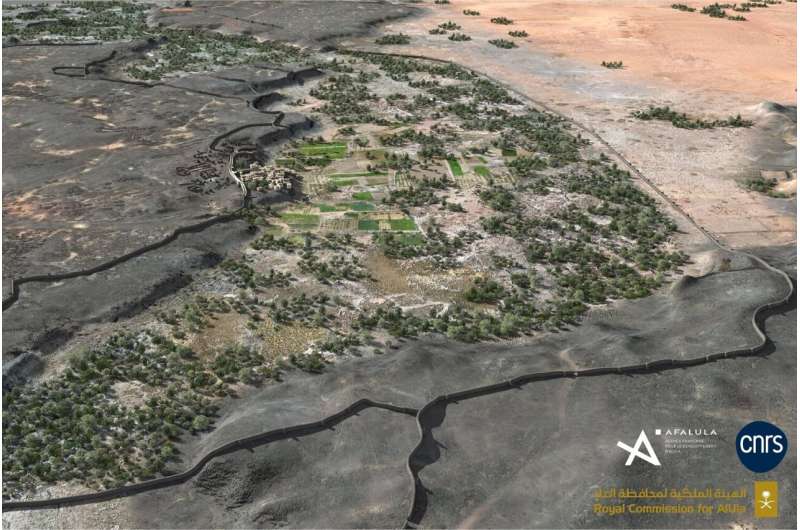This article has been reviewed according to Science X's editorial process and policies. Editors have highlighted the following attributes while ensuring the content's credibility:
fact-checked
peer-reviewed publication
trusted source
proofread
Discovery of immense fortifications dating back 4,000 years in northwestern Arabia

The North Arabian Desert oases were inhabited by sedentary populations in the 4th and 3rd millennia BCE. A fortification enclosing the Khaybar Oasis—one of the longest known going back to this period—has just been revealed by a team of scientists from the CNRS and the Royal Commission for AlUla (RCU).
A study describing this work is published in Journal of Archaeological Science: Reports.
This new walled oasis is, along with that of Tayma, one of the two largest in Saudi Arabia. While a number of walled oases dating back to the Bronze Age had already been documented, this major discovery sheds new light on human occupation in northwestern Arabia, and provides a better grasp of local social complexity during the pre-Islamic period.
Cross-referencing field surveys and remote sensing data with architectural studies, the team estimated the original dimensions of the fortifications at 14.5 kilometers in length, between 1.70 and 2.40 meters in thickness, and approximately 5 meters in height.
Preserved today at over a little less than half of its original length (41%, 5.9 km and 74 bastions), this colossal edifice enclosed a rural and sedentary territory of nearly 1,100 hectares. The fortification's date of construction is estimated between 2250 and 1950 BCE, on the basis of radiocarbon dating of samples collected during excavations.
While the study confirms that the Khaybar Oasis clearly belonged to a network of walled oases in north-western Arabia, the discovery of this rampart also raises questions regarding why it was built as well as the nature of the populations that built it, in particular their relations with populations outside the oasis.
This archaeological discovery paves the way for major advances in understanding the prehistoric, pre-Islamic, and Islamic past of the north-western Arabian Peninsula.
More information: Discovery of immense fortifications dating back 4,000 years in north-western Arabia, Journal of Archaeological Science: Reports (2024). dx.doi.org/10.1016/j.jasrep.2023.104355
Journal information: Journal of Archaeological Science
Provided by CNRS



















